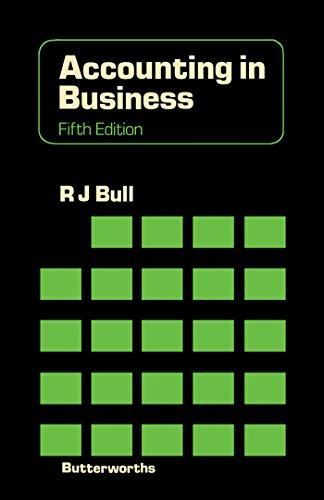Question
1) Ratchet Manufacturing anticipates total sales for August, September, and October of $210,000, $220,000, and $230,500 respectively. Cash sales are normally 20% of total sales
1)
Ratchet Manufacturing anticipates total sales for August, September, and October of $210,000, $220,000, and $230,500 respectively. Cash sales are normally 20% of total sales and the remaining sales are on credit. All credit sales are collected in the first month after the sale. Compute the amount of accounts receivable to be reported on the company's budgeted balance sheet for August.
Multiple Choice
$44,000.
$168,000.
$210,000.
$176,000.
$42,000.
2)
If the exchange rate for Canadian and U.S. dollars is 0.81777 to 1, this implies that 14 Canadian dollars will buy ____ worth of U.S. dollars. (Select the nearest answer.)
Multiple Choice
$0.05841
None of these.
$11.44878
$0.81777
$1.81777
3)
On February 15, Jewel Company buys 6,800 shares of Marcelo Corp. common at $28.65 per share plus a brokerage fee of $455. The stock is classified as available-for-sale securities. This is the companys first and only investment in available-for-sale securities. On March 15, Marcelo Corp. declares a dividend of $1.17 per share payable to stockholders of record on April 15. Jewel Company received the dividend on April 15 and ultimately sells half of the Marcelo Corp. stock on November 17 of the current year for $29.42 per share less a brokerage fee of $310. The fair value of the remaining 3,400 shares is $29.62 per share. The amount that Jewel Company should report in the asset section of its year-end December 31 balance sheet for its investment in Marcelo Corp. is:
Multiple Choice
$5,578.
$195,275.
$3,070.
$2,080.
$100,708.
4)
Ratchet Manufacturing anticipates total sales for August, September, and October of $310,000, $265,000, and $275,500 respectively. Cash sales are normally 30% of total sales and the remaining sales are on credit. All credit sales are collected in the first month after the sale. Compute the amount of cash received for September.
Multiple Choice
$185,500.
$296,500.
$172,500.
$402,500.
$217,000.
5)
A company's Inventory balance at the end of the year was $197,000 and $210,000 at at the beginning of the year. Its Accounts Payable balance at the end of the year was $94,000 and $89,000 at the beginning of the year, and its cost of goods sold for the year was $730,000. The company's total amount of cash payments for merchandise during the year equals:
Multiple Choice
$738,000.
$748,000.
$722,000.
$712,000.
$730,000.
Step by Step Solution
There are 3 Steps involved in it
Step: 1

Get Instant Access to Expert-Tailored Solutions
See step-by-step solutions with expert insights and AI powered tools for academic success
Step: 2

Step: 3

Ace Your Homework with AI
Get the answers you need in no time with our AI-driven, step-by-step assistance
Get Started


